
Some of the links in this post may be affiliate links.
Are you looking for plant ideas for your shady front porch? Look no further because these 15 plants in this post are among the best plants that you can grow in the shade. All of these plants will grow well in full shade to even a few hours of morning or very late afternoon sun.
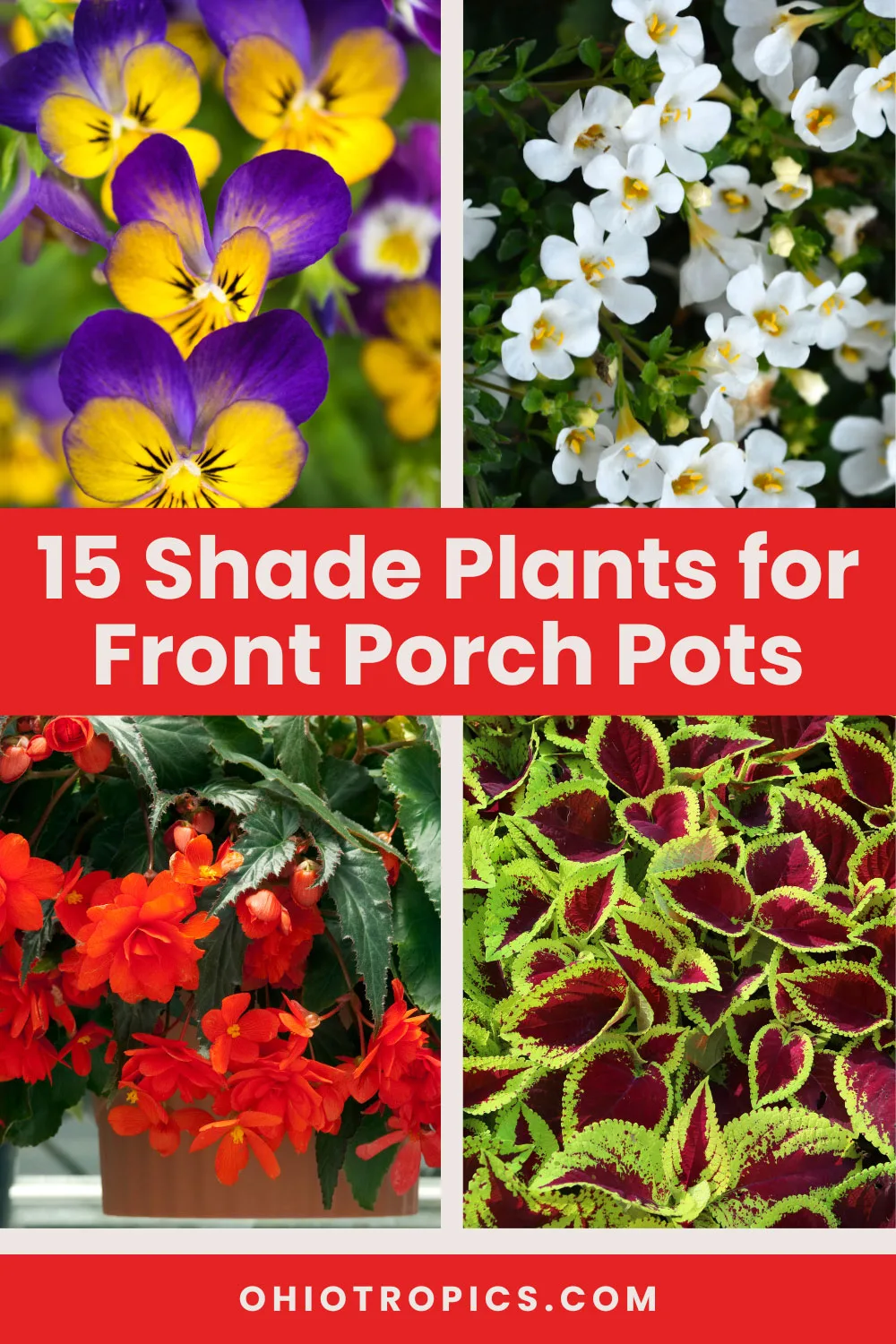
SHADE PLANTS FOR FRONT PORCH FLOWER POTS
1. Impatiens

This may be one of the most recognized plants for shady areas. But these days, with the selection of plants available, you’ll need to know which impatiens types are best suited for shade because there are certain impatiens varieties that have been developed for sun!
If you have full shade or only a little sun in the morning, the standard bedding impatiens that are sold in flats (Impatiens walleriana) are great candidates. Besides mass planting these in beds, these impatiens grow well in pots.
New Guinea Impatiens would be best if they had 2-4 hours of direct sun. They have bigger leaves and flowers than the standard bedding impatiens. Lastly, SunPatiens were specifically developed to grow well in full sun, so you’ll want to avoid these for your shady porch.
Regardless of what kind of impatiens you have, don’t let your impatiens dry out completely. Keep them evenly moist throughout the growing season.
2. Hostas
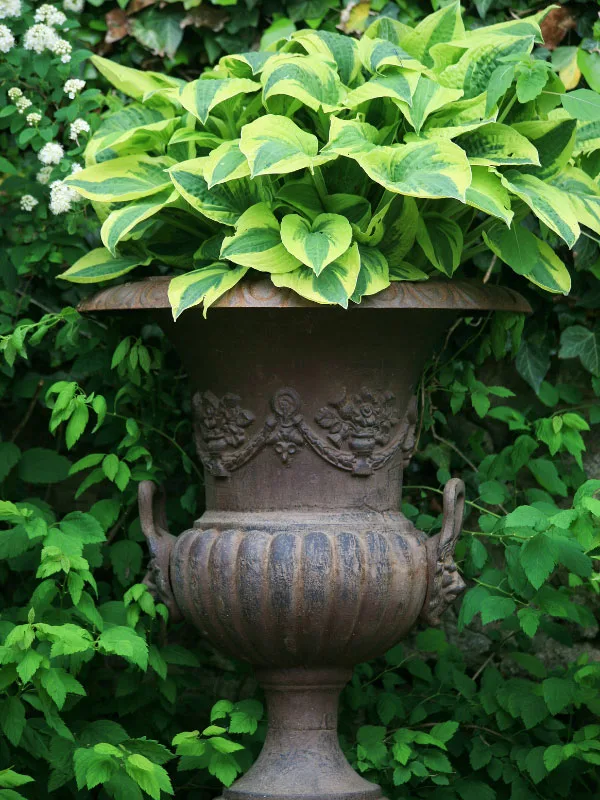
Although these are hardy perennials in cold winter regions (most are hardy down to zones 3 or 4), it shouldn’t stop you from using them in pots if you want to! With the variety of sizes, colors, and texture of foliage, you can plant them on their own, or even in mixed shade planters for your front porch.
At the end of the season, especially if your potted Hosta plants are in a very exposed area, it may be a good idea to mulch the top of the pot. Or you can even tuck your pot in a more sheltered area outside, or even store in an unheated garage in order to avoid constant freeze/thaw cycles that can be harmful to your plants. If you’re storing in a covered location, make sure the soil doesn’t stay bone dry all winter long.
At the end of the season, you may also choose to plant your Hostas in the ground before the ground freezes.
3. Begonias
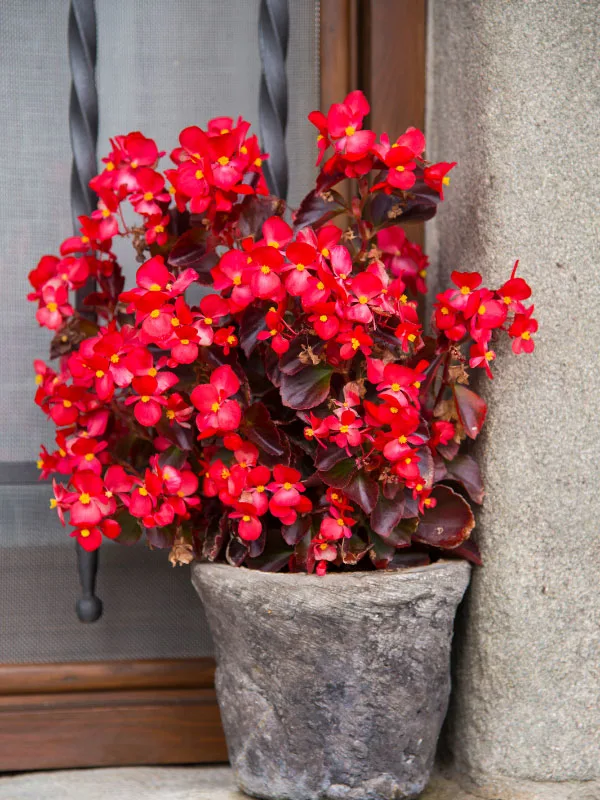
Not all begonias are created equal, but if you have full shade, these are two great options for flowering plants. Both wax begonias and tuberous begonias will grow and bloom in full shade, but flowering will be more abundant if you have dappled sun or 2-3 hours of direct sunlight.
Wax begonias actually will grow in most light conditions (even full sun if you water them enough!)
Tuberous begonias tend to have both larger leaves and larger flowers than wax begonias.

Avoid mid-day sun otherwise they can scorch if they get too much sun, or sun that is too intense. Full shade will work, but early morning sun or late afternoon sun would be beneficial for growth and more flowering.
4. Coleus
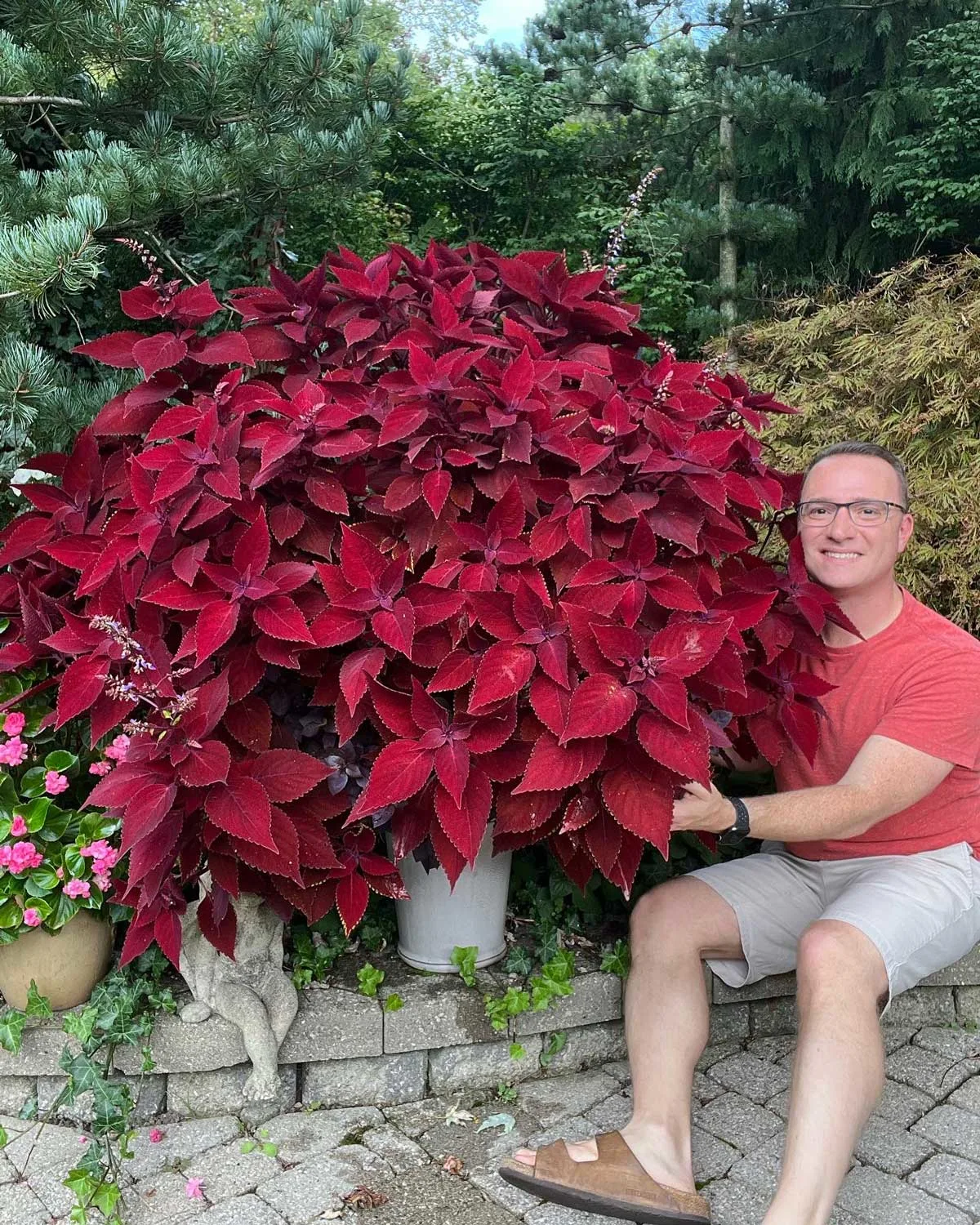
Coleus plants, with their bold foliage, come in an array of colors and are classic shade plants. They come in a staggering variety of sizes so be sure to pay attention to the size indicated on the label when you purchase your plants. Heights can range from a few inches high, to a few feet.
Most varieties have an upright growth habit, but there are even trailing varieties!
Be sure to deadhead Coleus flowers so that your plants can concentrate on foliage growth, which is the reason why you grow these plants anyway. The flowers are insignificant and take energy away from foliage growth.
I’ve grown many varieties of Coleus, and these days, there are even sun-loving coleus as well! You can grow these varieties in shade too, but the foliage color will be more brilliant if they get at least a little sun.
5. Fuschia
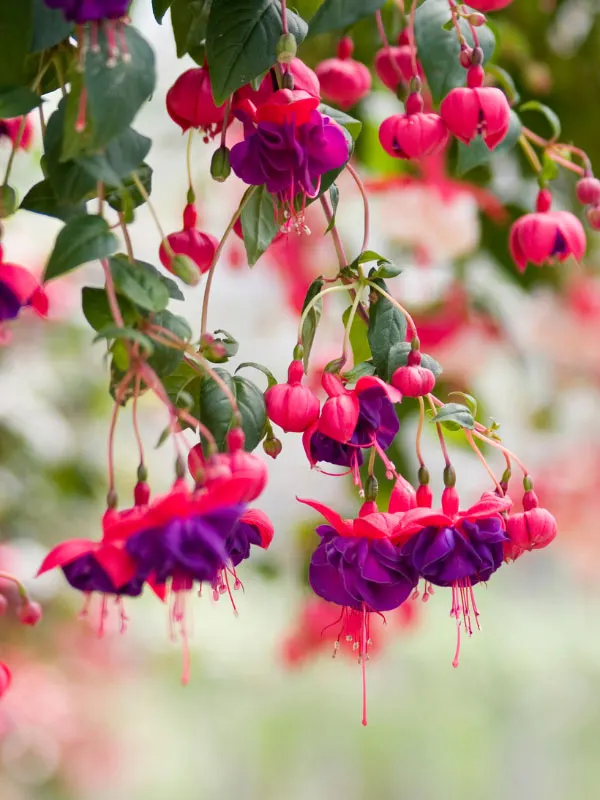
Who can resist the brilliant multicolored flowers of the Fuschia plant? These plants can thrive in full shade to partial sun. Early morning sun or late afternoon sun can be beneficial for flowering. Just be sure to avoid mid-day sun as it can be too harsh for fuschia plants.
Keep your plants pretty evenly moist because they really hate to dry out.
6. Ferns

Ferns are classic shade plants. They come in quite a variety of sizes and shapes. The classic boston fern is a wonderful choice for hanging on shady porches, and you can even overwinter them indoors when it starts to get cold.
Maidenhair ferns are also wonderful plants for shady areas. Regardless of the type of fern, don’t let any of them dry out! They love moist conditions, so water them frequently, even daily in hot weather.
7. Mint
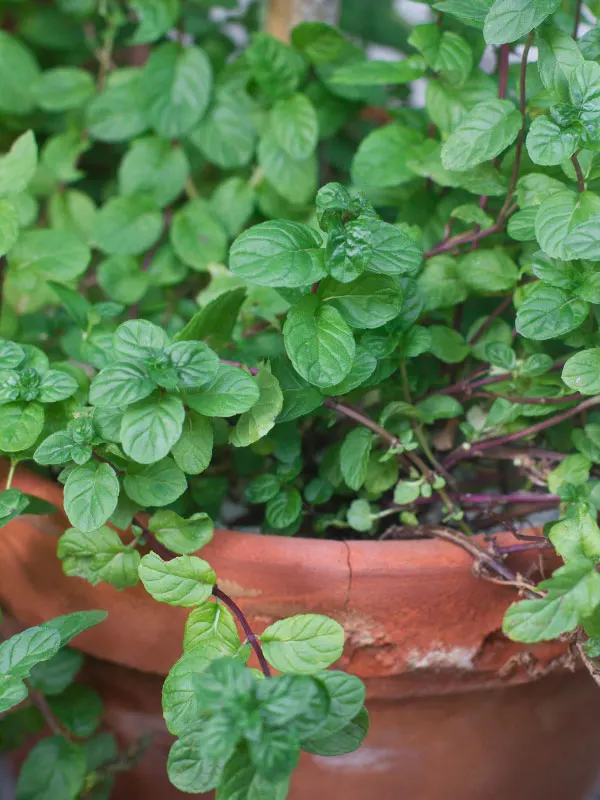
If you’ve avoided planting any herbs because of their need for sun, you will be happy to find out that mint will practically go anywhere, including in full shade! In fact, potted mint plants are preferred because mint plants can be very invasive when planted in the ground.
Mint sends out runners and practically takes over your garden beds and even start to grow into your grass. I’ve made this mistake many years ago and have been growing them in pots ever since. So go ahead and plant your mint in a pot on your shaded porch and enjoy it in your drinks and fresh summer dishes.
8. Caladium
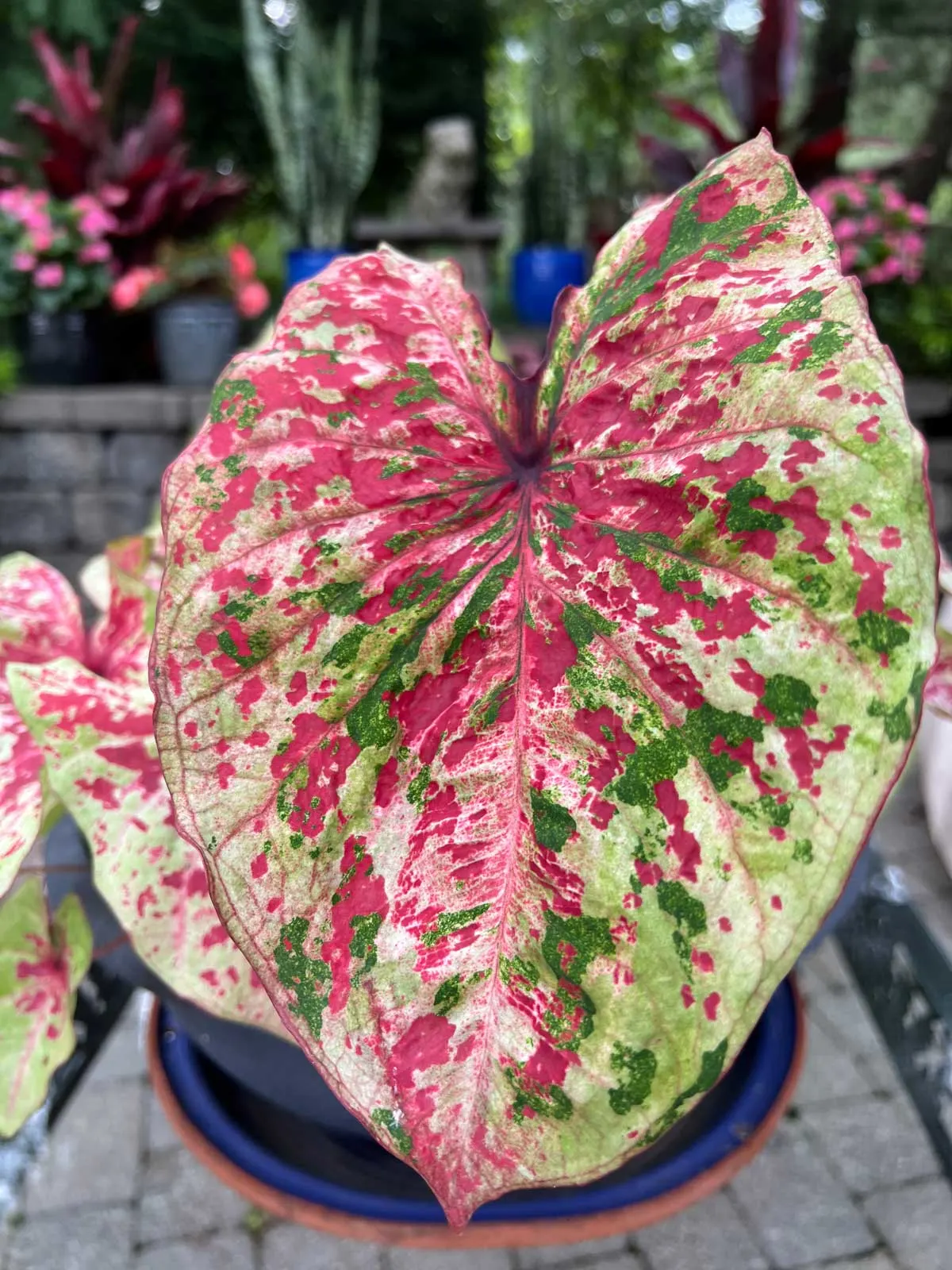
Few other plants (other than Coleus) have such colorful foliage. Caladiums really add a burst of color to your shady porch or patio!
Many caladium varieties will do beautifully in the shade. There are some kinds that have been bred to grow in some direct sun, so when you’re purchasing your plants (or if you’re planting your own Caladium bulbs), pay attention to the plant label so you pick the right varieties.
If you’ve struggled with growing these plants, check out my Caladium problems blog post to help you troubleshoot.
9. Creeping Jenny
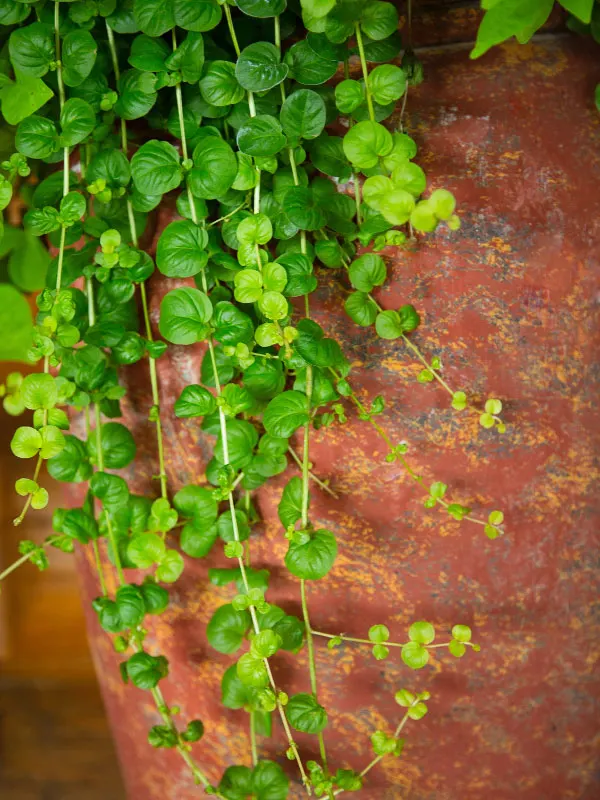
This foliage plant is wonderful in pots as “spillers” in mixed planters. Lysimachia nummularia is a low-growing plant that roots as it creeps along the soil surface. Once it hits the edge of your pot, it’ll simply dangle over the edge. It is actually hardy down to zone 3, so don’t be surprised if you see it coming back in the Springtime.
10. Oxalis

Commonly called shamrock plants, Oxalis comes in different foliage colors including green and purple (Oxalis triangularis). They have a reputation of being weedy, but they make for wonderful potted plants in your shady porch pots! Keep them moist for best results.
You can plant these on their own or include them as fillers in larger pots. If you live in a warm enough location, you can also plant them in the ground and they will grow as perennials.
11. English Ivy

English ivy will practically grow anywhere, sun or shade. This is a great spiller plant in mixed pots, or you can grow it on its own, and even as a topiary specimen like you see in the photo above. There are even variegated ivies.
12. Sweet Potato Vine

Sweet potato vines are gratifying because they grow super quickly (sometimes too quickly!) If you want a rapidly growing plant, sun or shade, these are wonderful plants to grow on their own or as a part of a mixed planter. And don’t be afraid to prune it back if (and when) it gets too big.
Plants in full shade will be greener than ones that get more light, but they will grow either way.
13. Bacopa
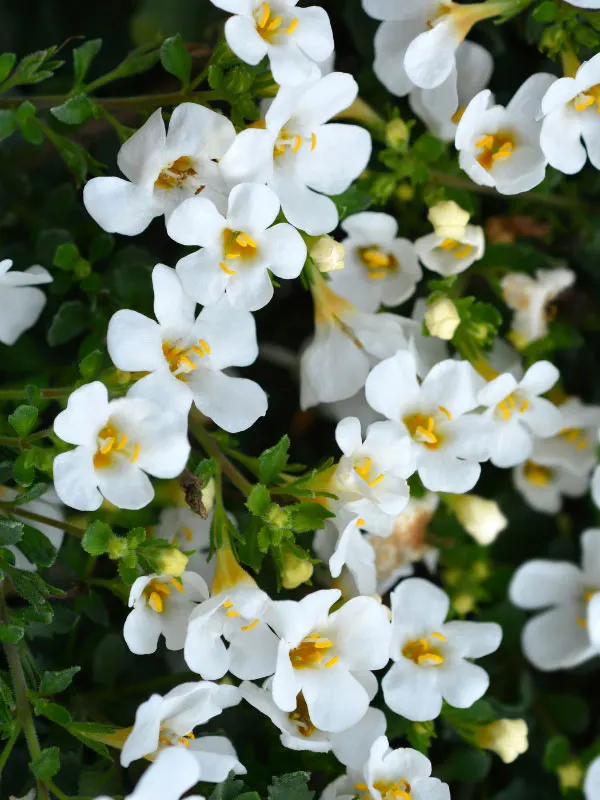
Happy in sun or shade, this dainty trailing plant is super easy to care for. Bacopa will bloom best in cooler weather, so if it slows its blooming down in the heat of summer, it will bounce right back when things cool off a bit.
14. Polka Dot Plant
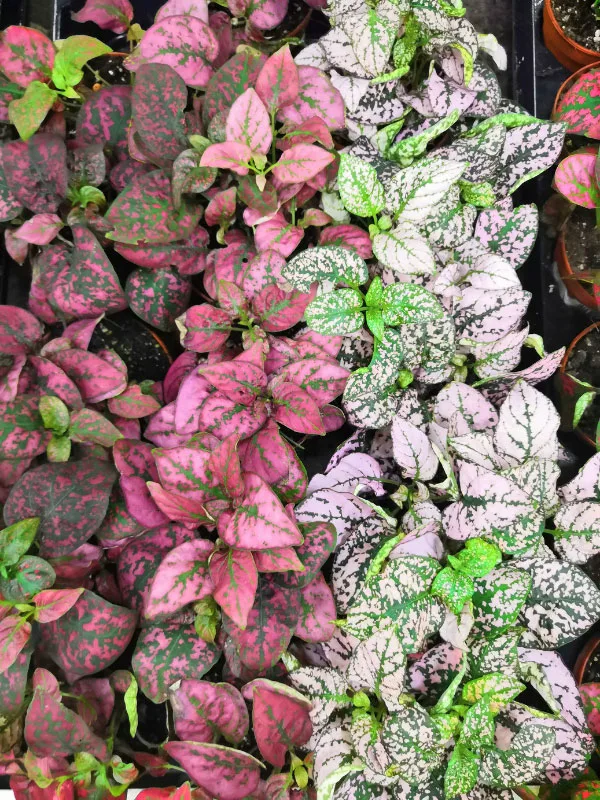
Hypoestes, commonly named the Polka Dot Plant, is a delightful little plant with beautifully colored foliage. Perfectly happy in full shade, grow this plant on its own, or even as a filler in a mixed pot.
Be sure to keep this plant very well-watered because it will droop in dramatic fashion if it dries out too much!
15. Viola
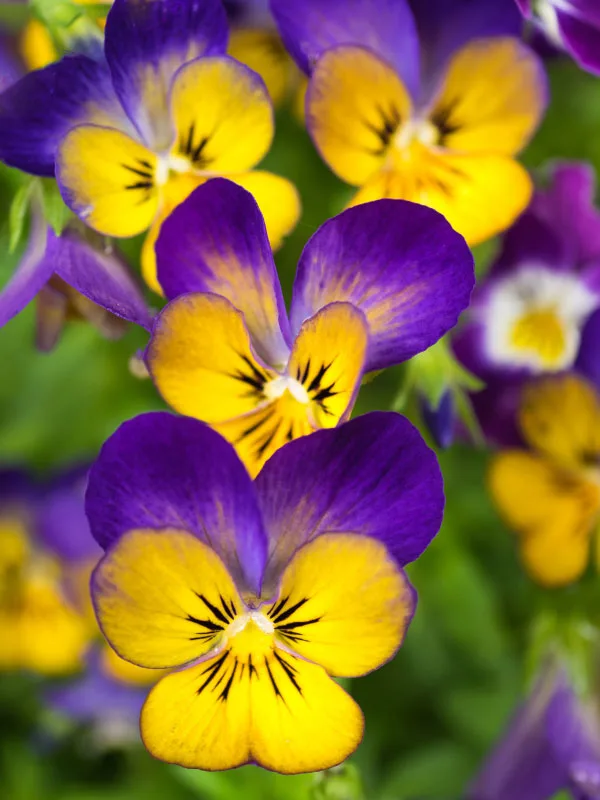
This genus of flowering plants, Violas are not to be confused with their Pansy cousins. Violas tend to have smaller flowers, and many are fragrant. Think of the “purple violets” in your lawn in the Spring. These are wild Violas.
They enjoy cooler weather so will bloom more profusely in the Spring and Fall. If they look a little ragged after a hot summer, you can trim them back and they should flush back out in new growth and bloom well again in the Autumn.
I hope you’ve enjoyed this post on shade plants for your front porch flower pots. What do you have in your pots? Comment below. I’d love to hear!
Trending Products











